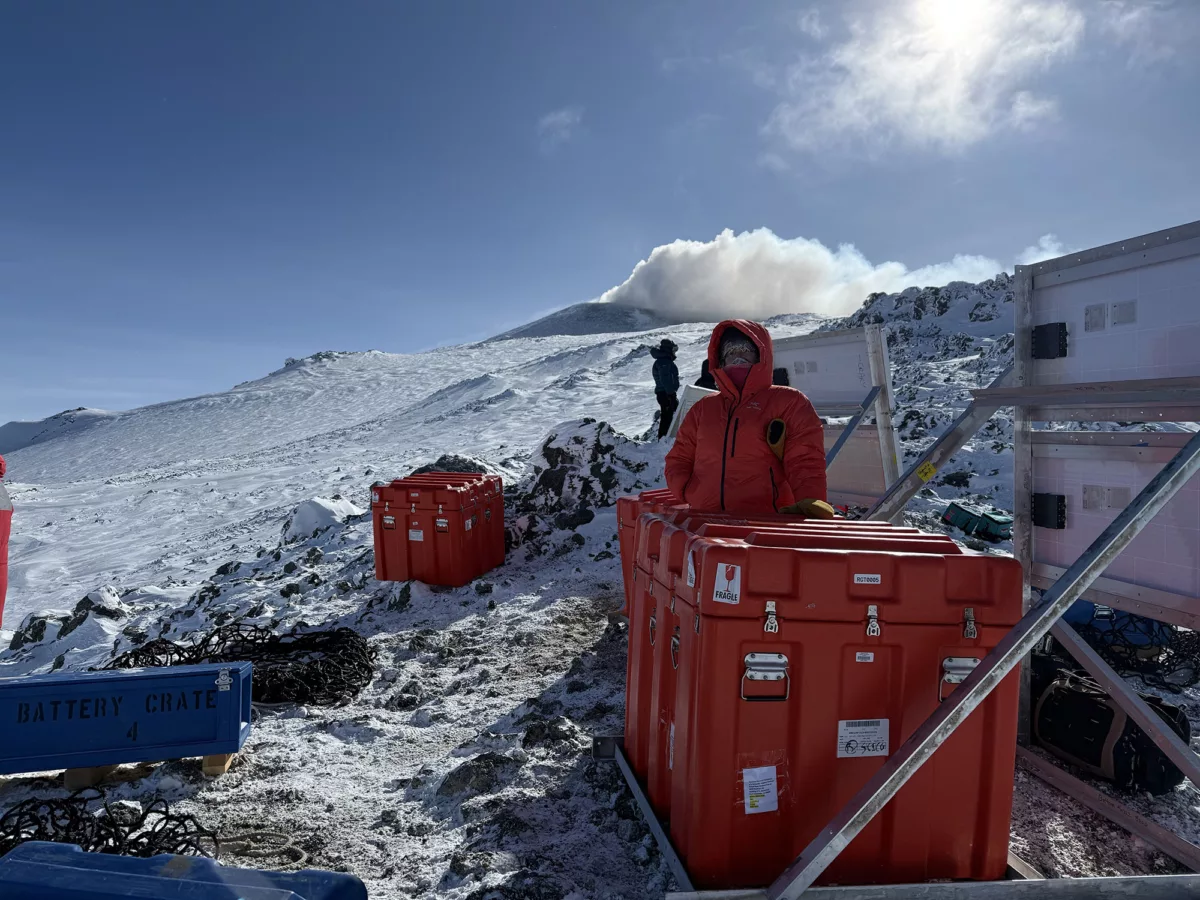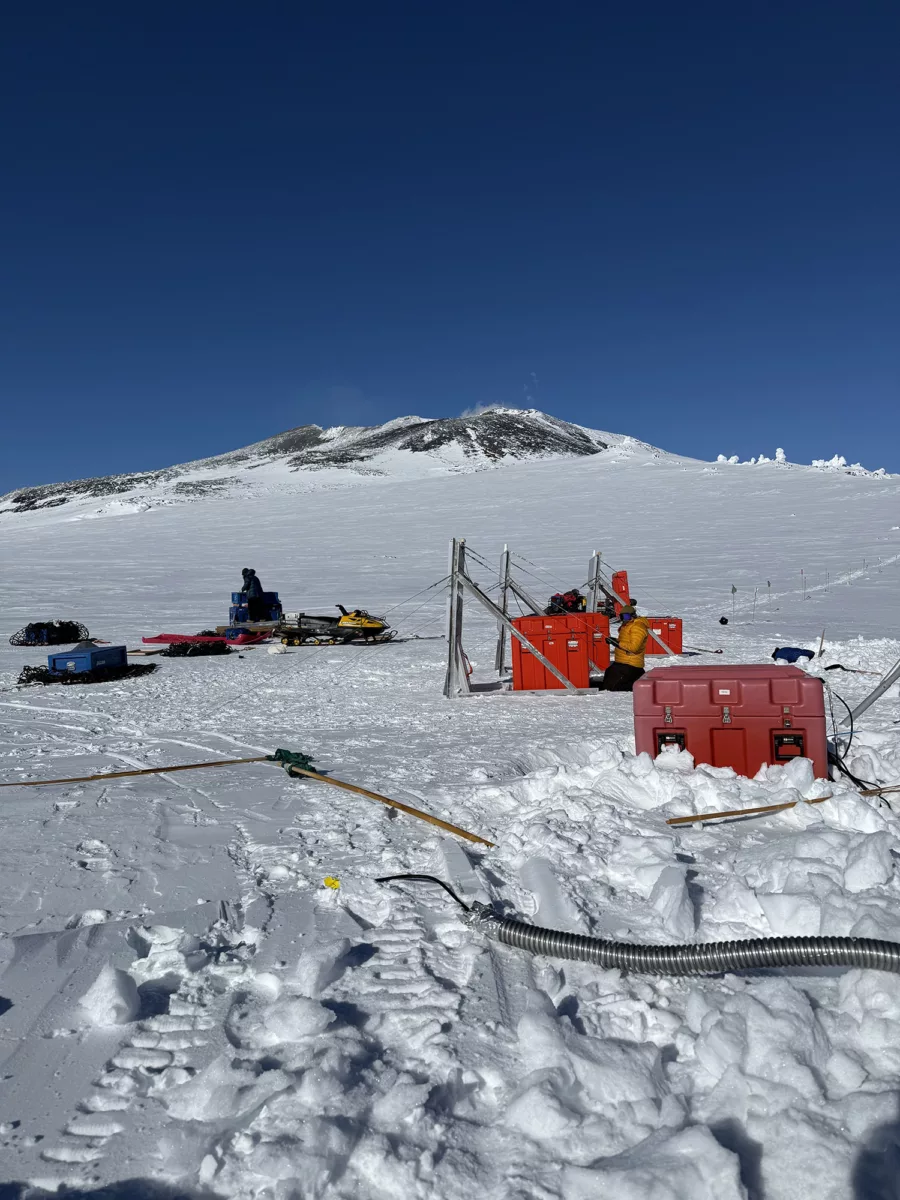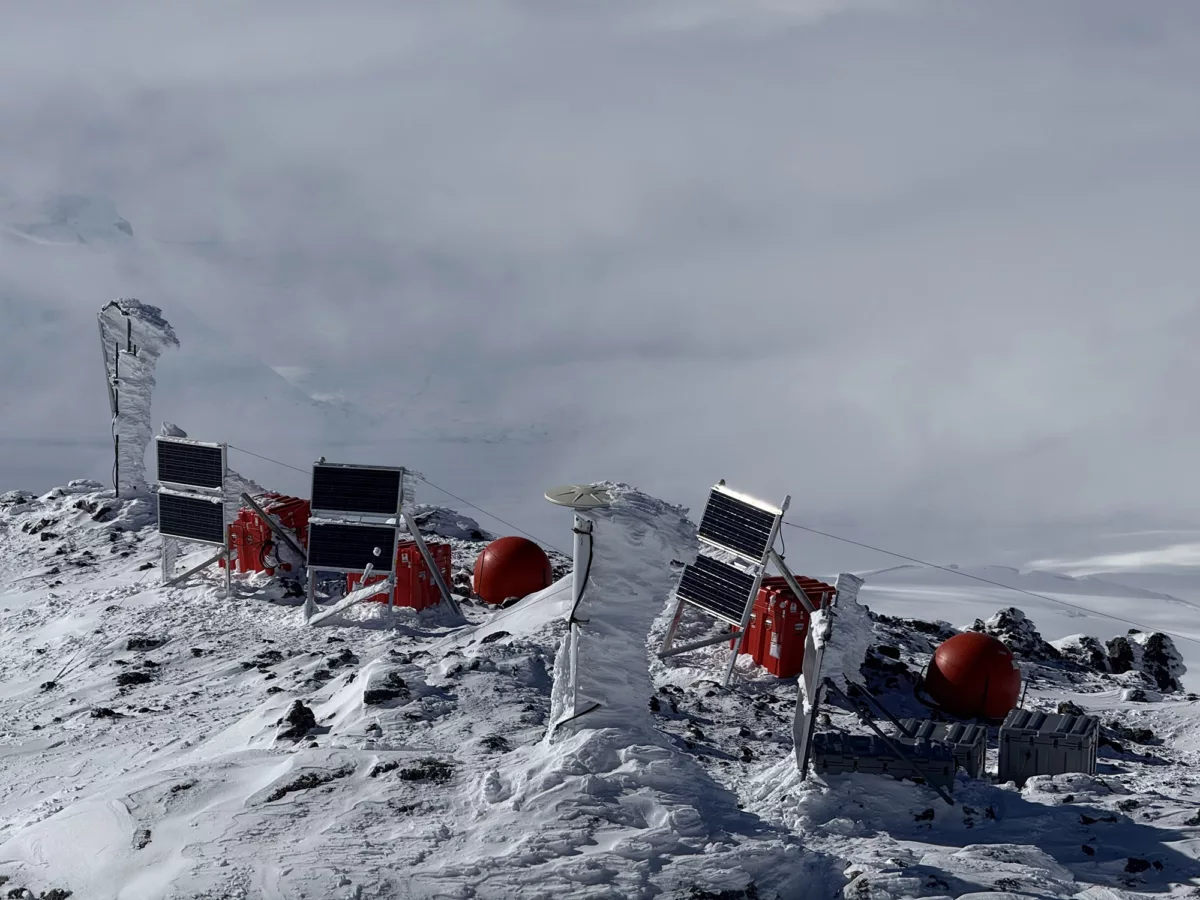Landing at Antarctica’s McMurdo Station means adapting to a harsh environment, but going up 11,000 feet in altitude from there takes it to another level. That’s the itinerary for work on the seismic network positioned on Mt. Erebus—the world’s southernmost active volcano neighboring McMurdo.
These seismic stations supported by the NSF SAGE Facility are key to studying volcanic activity at Erebus but maintaining them is obviously a challenge. Not only do the stations contend with frigid temperatures and howling winds, but they have to be powered through the dark Antarctic winter and can only be visited during the short summer field season. And that visit requires helicopter support and more.
In November and December, EarthScope staff made it to Erebus to download data and swap in some fresh batteries, but also to make major upgrades to the network. Going into the season, there were three perimeter stations and four near the summit. A fifth summit station has now been installed, and the other four were replaced with new components.

The summit stations now sport new broadband seismometers in addition to infrasound and strong motion instruments. The original plan called for the use of a portable borehole drill rig, specially adapted from one used during the USArray project. Unfortunately, that drill was too heavy for the helicopters that were available, so the team pivoted to the tried-and-true manual labor method. That meant installing the broadband sensors in shallower holes—with the exception of one site where solid ice shrugged off the team’s pickaxe, necessitating a surface install for now.
These stations also received beefed-up power systems, with a bank of batteries topped up in summer by solar panels. This was, in part, to enable the addition of some telemetry. These instruments are now reporting back diagnostic information over Iridium satellite connections to enable remote monitoring of their health. And additionally, one station (CONZ) has begun transmitting seismic data in near-real-time.
Team effort
Supported by Susan Stanford and Joe Pettit working at McMurdo Station, a team of Dianna King, Sam Jannke, and Ciera King spent six weeks on Mt. Erebus to get this work done. Based out of a camp at Lower Erebus Hut, mountaineers and a camp manager joined this team of three in snowmobiling to each station, while helicopters ferried equipment to and from McMurdo.
This arrangement kept the crew acclimated to the elevation and allowed for more flexible working windows than the four-hour maximum of a helicopter deployment. However, foul weather dominated the first two weeks, keeping them sheltering in the cramped quarters of camp for a patience-testing amount of time.
But despite the slow start, the team was able to accomplish their goals, making it to every station in the network. In the final tally, that included about 14,000 pounds of batteries moved up or down the mountain—an example of the scale of the logistical effort required to keep seismic stations running on Mt. Erebus.






